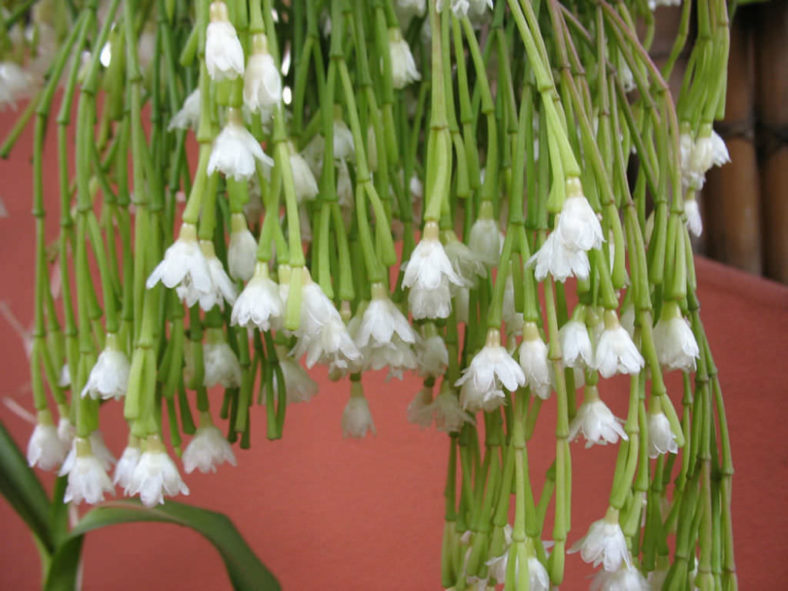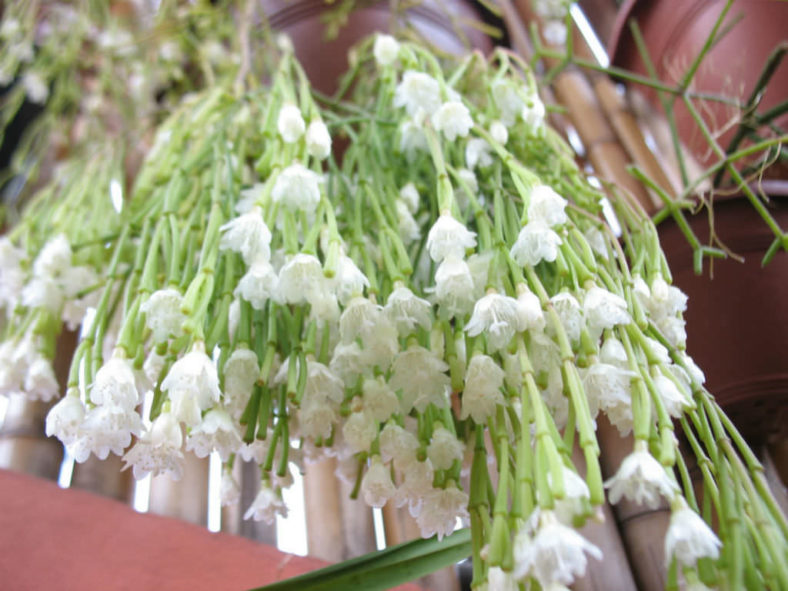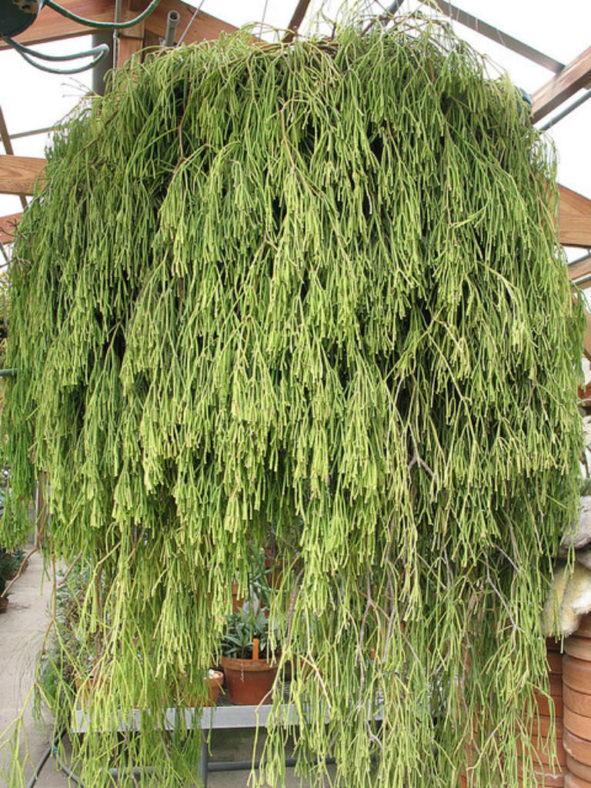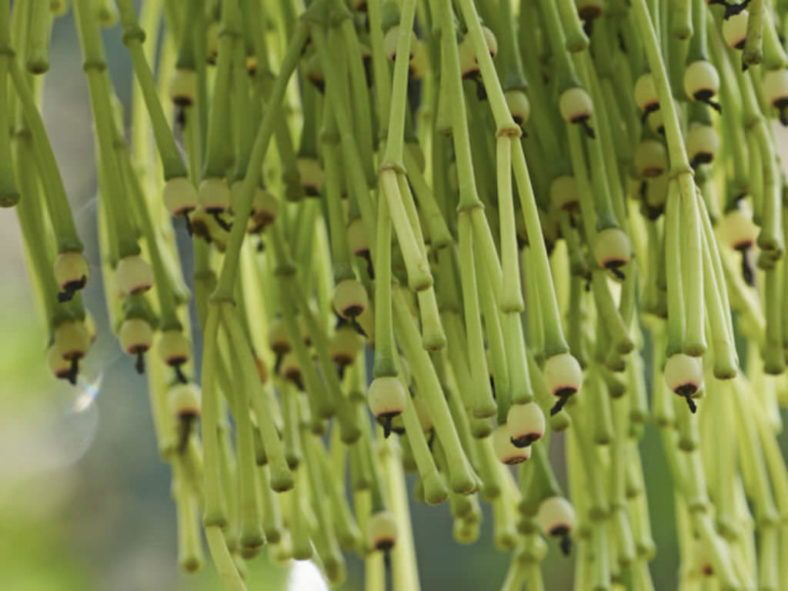Scientific Name
Rhipsalis clavata F.A.C.Weber
Synonym(s)
Erythrorhipsalis clavata, Hariota clavata, Hatiora clavata
Scientific Classification
Family: Cactaceae
Subfamily: Cactoideae
Tribe: Rhipsalideae
Genus: Rhipsalis
Origin
Rhipsalis clavata is native to Brazil. It grows as an epiphyte on branches of trees in Rio de Janeiro and São Paulo.
Description
Rhipsalis clavata is a stunning cactus with long, much-branched stems that are erect when young but soon hanging, often growing over 3.3 feet (1 m) long. The joints are narrowly club-shaped, deep green to brown, and arranged in terminal whorls of 2 to 7. They can reach a length of 1.2 inches (3 cm) and have a few areoles that sometimes bear 1 to 5 white hairs.
The white, bell-shaped flowers appear in spring near the end of the branches. They can measure up to 0.6 inches (1.5 cm) long. The fruits are spherical, white or yellowish, and up to 0.25 inches (0.6 cm) in diameter.

Hardiness
USDA hardiness zones 10a to 11b: from 30 °F (−1.1 °C) to 50 °F (+10 °C).
How to Grow and Care
Rhipsalis do not thrive in direct sunlight. Exposure to the afternoon sun can burn the leaves, turn them yellow, or cause spotting. However, they will not bloom without sufficient sunlight, and their growth can be stunted. These cacti do best with morning sun and full shade in the afternoon.
As Rhipsalis is commonly grown indoors, care must be given to the placement of the plants. They should be kept at least 20 inches (50 cm) away from windows that receive midday or afternoon sun. The glass in the windows can multiply the heat from the sun's rays, causing sunburned leaves. Keep in mind that in its native environment, Rhipsalis is accustomed to receiving light filtered through dense, overhanging tree branches. Picturing this environment can help you adjust your lighting accordingly.
Rhipsalis is not a drought-resistant plant, so regular watering is essential. Overwatering, however, can cause weak stems and rotted roots. Using a watering can help you measure the amount of water you are providing. The size of the pot compared to the size of the plant, the humidity levels in the home, and the type of potting soil used can all affect the watering frequency.
See more at How to Grow and Care for Rhipsalis.
Links
- Back to genus Rhipsalis
- Succupedia: Browse succulents by Scientific Name, Common Name, Genus, Family, USDA Hardiness Zone, Origin, or cacti by Genus
Photo Gallery
Click on a photo to see a larger version.


